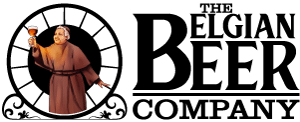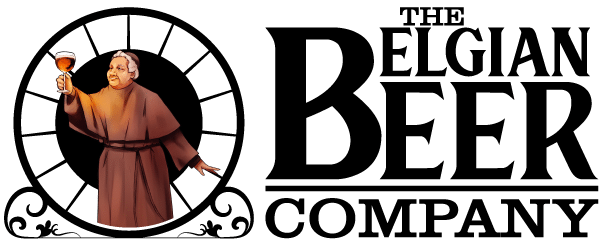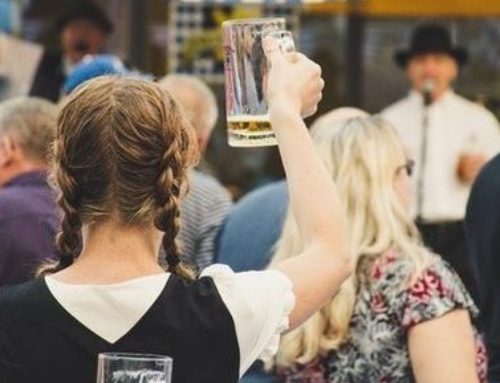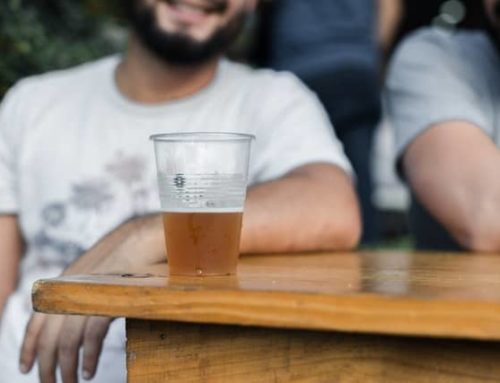When thinking about beer, almost every mind immediately travels to the beguiling image of sultry blonde maidens carrying overflowing steins.
What you are thinking about is far from being a product of your vivid imagination, or worse, some kind of vision coming directly from the Valhalla of Beers. It is, in fact, a centuries-old festival held in Germany almost every year -they had to skip it over the pandemic- and you probably know it by the name of Oktoberfest.
But what is it? Who invented it? And how can you celebrate it properly without having to travel all the way to Germany?
Let’s find out everything you need to know about Oktoberfest!
What is Oktoberfest? And Why Do You Drink Beer?
Let’s begin our journey by saying that the term “Oktoberfest” roughly translates from German to “October festival”. Oddly enough, it’s not exclusively celebrated in October. As a matter of fact, it only ends during the first weekend of said month.
But what is it? And why is it celebrated?
Well, we like to think that every beer story is, in fact, a love story and in this case might be truer than ever: although its origins are controversial, people like to think that Oktoberfest was first held to celebrate the wedding between King Ludwig I and Princess Therese of Saxe-Hildburghausen in 1810 Munich. Yet historians tend to think that what truly happened at the time was that the happy couple was greeted by a delegation of local farmers and citizens of Munich, and later celebrated with a horse riding competition.
Whatever the origin, it seems pretty obvious that the citizens enjoyed this get together so much that it developed into an extremely popular festival which continued to be held every year for two centuries.
Starting in 1811, it started growing with the addition of food and carousels. At the moment it is considered to be the largest festival in the whole world. In 1811 the organisation decided to promote Bavarian agriculture by setting up a show. And after a small break taken in 1813 due to the involvement of Bavaria in the Napoleonic Wars, the Oktoberfest started growing from year to year. From the beginning, this festival included a wide variety of attractions such as horse races, accompanied by tree climbing, bowling alleys, and swings and other niceties.
In 1818, carnival booths made their entrance with the possibility of winning prizes made of silver, porcelain, and jewellery. In 1819, the city fathers assumed responsibility for festival management and Oktoberfest officially became an annual event. After the first half of the 1830ies, the Oktoberfest was lengthened and the date was pushed forward because days are longer and warmer at the end of September. The horse race continued until 1960, and the agricultural show still exists today and is held every four years in the southern part of the festival grounds.
Aren’t we forgetting someone? Well, the organisation decided to commemorate the union between Prince Ludwig and Therese of Saxe-Hildburghausen by holding a parade which, since 1850, became an annual event and an important component of the Oktoberfest.
So much for a happy ending!
Eight thousand people—mostly from Bavaria—usually dressed in traditional costumes walk from Maximilian Street through the centre of Munich to the Oktoberfest grounds. The march is led by the Münchner Kindl. And who’s this? Simply put, it’s the symbol of Munich’s coat of arms. It translates from Bavarian dialect as “Munich Child” and, since 1850, has been carefully watching over the Oktoberfest.
By the end of the 20th century, the booths were nothing more than a memory: they had, in fact, developed into large beer halls made of plywood, with interior balconies and bandstands.
Since the very beginning, the Oktoberfest has always been all about the city of Munich. More than a celebration of beer per se, it’s a way of honouring the hard work of local artisans and the fruits of the land. That’s why food and breweries have always represented a crucial role in the festival!
To further promote local enterprises, each one of the Munich brewers gets to erect a temporary structure with seating capacities of some 6,000, resulting in 14 large tents and 22 smaller ones. The breweries are also represented in parades that feature beer wagons and floats along with people in folk costumes. Not bad for a rural festival, right?
Since 1960 the festival has been opened by the mayor of Munich, who has the honour of tapping the first keg. Total beer consumption during Oktoberfest is upwards of 75,800 hectolitres (about 2 million gallons). Other entertainment includes games, amusement rides, music, and dancing. Oktoberfest draws more than six million people each year, many of which are tourists.
This year’s festival should have begun on Saturday, September 18, and ended on Saturday, October 2, 2021.
How Do You Celebrate?
After the parade of the restaurateurs on carriages from downtown to the festival grounds, at exactly 12:00 clock the lord mayor opens the first beer barrel in the “Schottenhamel” tent. With the initial pass and the Bavarian exclamation, “O’zapft is!” (es ist angezapft—It has been tapped!) the Oktoberfest is declared open.
Twelve gunshots are then fired on the stairway of Ruhmeshalle. This is the signal for the other restaurateurs to start with the serving of beer.
Traditionally, the Bavarian Minister-President is served the first litre of beer. Then in the other tents, the first barrels are tapped and beer is served to the visitors. After that, the party begins and in each one of the structures, guests start receiving their orders and drinking their first litres of beer.
Basically, you eat, drink, dance and socialise under the protective glance of the Münchner Kindl!
Far from being just a ceremonial activity, the tapping ceremony is highly anticipated by visitors, who even place bets on how many strokes the mayor needs to use before the first beer flows. The best performance is still two strokes (Christian Ude, 2005, 2008, 2009, 2010, 2011, 2012 and 2013; Dieter Reiter, 2015, 2016, 2017, 2018 and 2019), but there were also 19 strokes required (Thomas Wimmer, 1950).
Oktoberfest is not, though, all about beer. And thinking that would be incorrect. Oktoberfest is all about Bavaria and beer just happens to be one of its best products.
That’s why the main rule inside the tents of the festival is that no beer brewed outside of Bavaria is to be served.
That’s right! It’s definitely not the time or place to enjoy a pint of Chimay.
In order to be featured in the Oktoberfest, each beer has to follow the strict rules of the Reinheitsgebot, a centuries-old law that regulates the production of beer in Bavaria and must be brewed within the city limits of Munich.
What Are Oktoberfest’s Traditional Brews?
- Augustiner-Bräu
- Hacker-Pschorr-Bräu
- Löwenbräu
- Paulaner
- Spatenbräu
- Staatliches Hofbräu-München
These six beers encapsulate the spirit of the Bavarian brewery to the point of being the signature drink of every Oktoberfest.
Each one of these breweries has its own tent. While we wait for next year’s festival, these beers can be found in our Oktoberfest’s Pack as well!
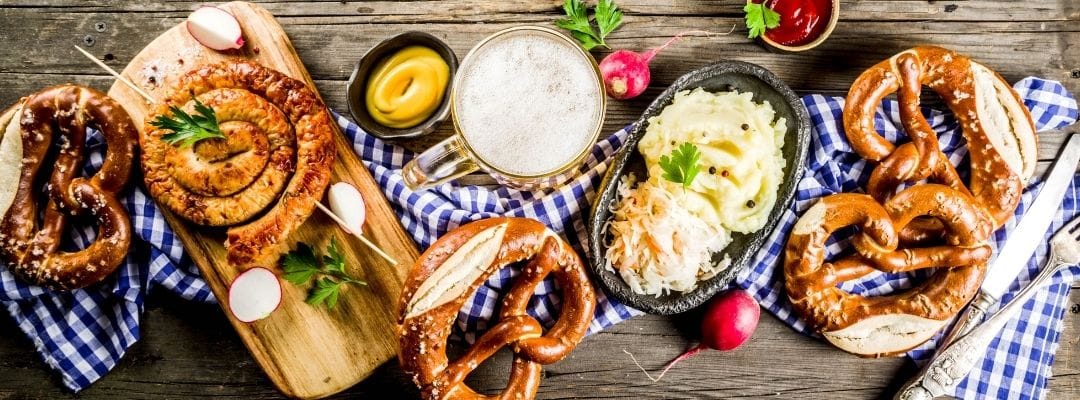
The Tents: Everything You Need To Know from Beer To Food…
Each and every tent of the festival has its traditions and attractions. Some of them are famous for serving specific foods and some others are considered legit VIP areas. We could say that there’s a tent for every taste.
In the meantime, we’ll talk you through the fourteen main tents and give you a sneak peak inside the festival.
- Marstall- It’s the first tent visitors see. Much of its fame comes from musical entertainment: here’s where you can find traditional Bavarian music.
- Armbrustschützenzelt- “The Crossbowmen’s Tent”, another of the tents that were built by the crossbowmen’s guild.
- Hofbräu-Festzelt- This is the Oktoberfest’s counterpart to the famous Hofbräuhaus.
- Hacker-Festzelt- Famous as the Heaven of Bavarians, it’s also a great place to listen to some Bavarian rock music.
- Schottenhamel- The main tent. That’s where the tapping ceremony takes place and where the Oktoberfest officially begins.
- Winzerer Fähndl- literally translates as “Winzerer’s little flag” and it’s another of the crossbow men’s guild’s tents.
- Käfer Wiesn-Schänke- If you want to spot a celebrity, this tent, which is rather smaller compared to the others, is the place to be. As it’s considered to be the VIP area of the Oktoberfest, making a reservation here can be quite problematic and it stays open longer than the others.
- Weinzelt- A rather different tent, dedicated to wine.
- Löwenbräu-Festhalle- This is a rather pittoresque tent where the protagonists are two enormous statues of two lions drinking beer.
- Bräurosl- This tent takes its name after the beautiful daughter of the original owner of Pschorr. It’s famous for its musical entertainment and for its LGBTQ+ friendly party.
- Augustiner-Festhalle- Considered to be the best place to be in the Oktoberfest, it’s renowned for serving Augustiner directly from wooden kegs.
- Ochsenbraterei- A great tent to go to if you are keen on ox. As the name suggests, in fact, this tent specialises in ox recipes. Not suitable for vegetarians!
- Fischer-Vroni- As there’s a tent dedicated to eating ox, there’s one for eating fish. And this is it! Their signature dish is, quite literally, fish roasted on a stick. As simple as it might sound, it’s absolutely delicious!
- Schützen-Festhalle- This tent is supervised by the monumental Bavaria statue.
How many litres of beer are being poured during Oktoberfest?
As you can imagine, beer is being poured down like water in the Ocean. But how much beer is enough beer for an Oktoberfest?
Well, historical data shows that in 2014 7.7 million litres of beer were drunk by the 6.6 million of visitors. Such a remarkable thirst was accompanied by the consumption of 112 oxen, 48 calves and over 600,000 chickens.
Now that’s definitely a party worth attending!!!
Let’s Talk Entertainment: What To Do While At The Oktoberfest…
Nothing is easier than having fun at the Oktoberfest. The festival is meant to be welcoming towards all guests, from little kids to the elderly.
You can find music, dance, competition, carousels and even a flea circus! Yes, you read that correctly.
Try sending a letter from the Oktoberfest: you will receive a special stamp as a memento of your wonderful trip.
Planning your own party!
We understand that pandemics and festivals don’t seem to go along too well. Plus, this year’s Oktoberfest has been postponed to 2022, not leaving much of a choice when it comes to attending. That’s why here at The Belgian Beer Company we made sure to have everything you need for you to party like it’s Oktoberfest without leaving your couch.
Now, we won’t judge if you should decide to have you and your guest sport some proper dirndl or traditional lederhosen -just make sure to take pictures and tag us over Instagram!- but keep in mind that there’s no Oktoberfest without beer.
You probably won’t be needing anything near those 7 million litres, but it’s best to be prepared for your friends’ extreme thirst.
After all, it’s still a party!
Now, we saw that, traditionally, Oktoberfest calls for certain specific kinds of beer, brewed within Munich but if you feel like having an international party one of our kegs (link kegs) might be worth buying.
Wanna keep it traditional?
Sweet, we’ve got you covered. Just keep in mind that all of our seasonal beers come as a limited edition and you might want to buy them before it’s too late!
Don’t forget to get the traditional chant “Ein Prosit der Gemütlichkeit” going!
Our selection for this year includes:
Our 18x Oktoberfest Beer Pack…
This is the most comprehensive pack to have you ready and cheerful for your domestic “Fest”. Perfect for farsighted organisers who want to keep every guest’s thirst at bay.
Our pack includes 3x Erdinger Oktoberfest, 3x Hacker Pschoor Oktoberfest, 3x Hofbrau Oktoberfestbier, 3x Lowenbrau Oktoberfest, 3x Paulaner Oktoberfest, and 3x Spaten Oktoberfest.What’s best is that this whole package comes with an amazing party kit including an original German stein (a must-have for every beer lover!), beer mats, flags, balloons and a beer opener.
Big pack for a big party! You better not miss it.
Paulaner Oktoberfest
Okay, we get it. You love beer but you are not ready to buy a multipack. You prefer to focus on just one kind of beer, and that’s completely fine. That’s why you can find all of the aforementioned bottles as singles and not just in a pack. Let’s delve a bit more into them to find out which one is the perfect one for your Oktoberfest!
The Paulaner Oktoberfest is an amazing blonde, top-fermented, beer. It has a mildly bitter taste that makes it refreshing and perfect for an easy, party drink. It goes amazingly well with any kind of party food you might want for your party.
Hofbräu Oktoberfestbier
When you think of Oktoberfest there’s only one food you instantly crave: and that’s German sausage. Now if there’s a beer that goes perfectly with a nice sausage is the Hofbrau Oktoberfestbier. It is a full-bodied, bottom-fermented speciality beer that is guaranteed to fly your tastebuds to Bavaria in just one sip.
What are you waiting for?
Erdinger Oktoberfest
What’s better than a wheat beer? Well an Oktoberfest wheat beer of course! This Erdinger is slightly stronger than the regular one but is one of the most traditionals to have during Oktoberfest. It has a nice, round and hoppy taste with the typical liveliness of a wheat beer.
Hacker Pschoor Oktoberfest
The original amber beer of Oktoberfest. It’s an incredible companion with roasted chicken.Its malty aroma and rounded taste is guaranteed to wash down every kind of barbecued meat.
Lowenbrau Oktoberfest
A beer for lions. Tasty, spicy, and traditional this Bavarian brew will have you adding lederhosen to your Amazon cart in the matter of a few sips.
Spaten Oktoberfest
The very first of Oktoberfest’s beers. This golden nectar, accompanied by savory and rounded notes of spice, is tailored to satisfy even the most demanding palates..
Are You Thirsty? Place Your Order Now!
After this long excursus in beer-story, you might feel a little parched. Luckily for you, we have beer.
Place your order, tag us on Instagram and Facebook and enter our amazing reward program where you might get the chance to win something special -hint hint: it’s beer!
What are you waiting for?
